The Big Interview
Can MoMA’s Expansion Ever Really Be Finished? Glenn Lowry on Where the Museum May—or May Not—Go From Here
In the second half of a two-part interview, MoMA director Glenn Lowry spoke about the future of the museum.
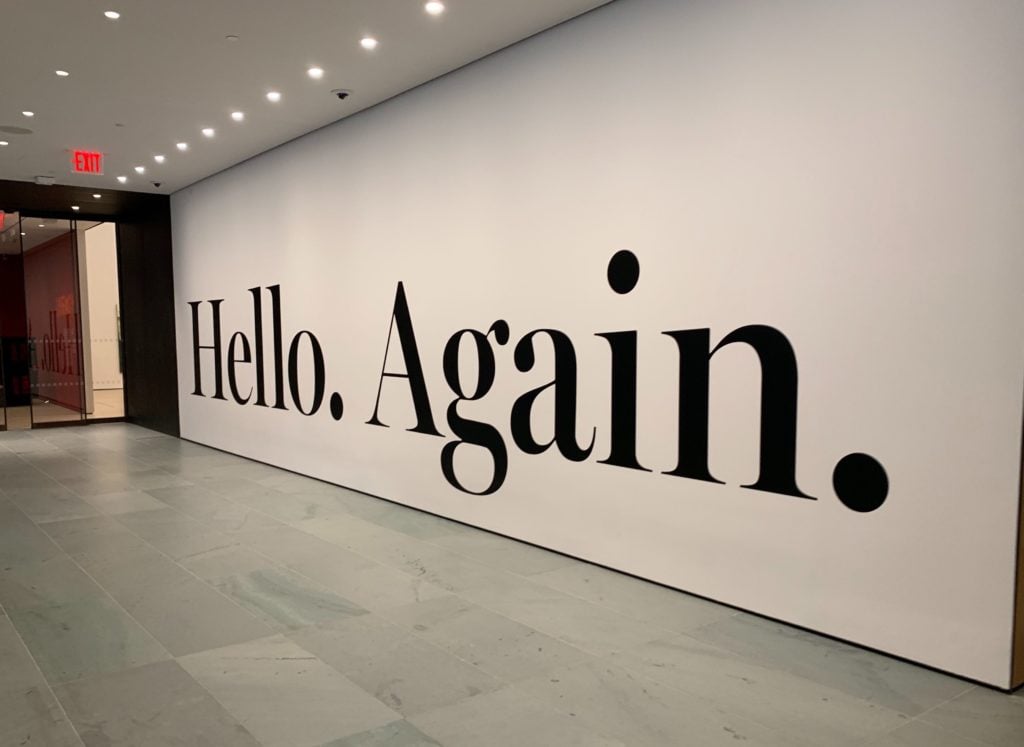
In the second half of a two-part interview, MoMA director Glenn Lowry spoke about the future of the museum.

Andrew Goldstein

The grand, gleaming architectural and curatorial complex that is the new Museum of Modern Art is the work of hundreds of specialists, patrons, designers, and other visionaries. But it is above all the towering achievement of one person: MoMA director Glenn Lowry. Having come to the museum in 1995 after five years of leading the Art Gallery of Ontario—and, before that, curating Near Eastern Art, his specialty by training, at the Smithsonian—Lowry is the longest-serving director ever to steer the institution, or at least he will be when his contract expires in 2025.
To ensure this would be the case, the board of trustees winked at MoMA’s normal retirement age of 65, signing him to stay at the helm until he is 71. Why they did this is no mystery. Having enormously expanded the museum’s audience, raised hundreds of millions of dollars for improvements, united it with Long Island City’s PS1 art center, overseen multiple architectural projects, and maintained the excellence and—with some exceptions—scholarly rigor that puts MoMA at the forefront of art institutions worldwide, he is probably the most accomplished museum director in the field today.
So what comes next? For the immediate future, the focus will be on learning how to pilot the newly re-envisioned institution through the choppy cultural waters of the present moment, which includes questions about the very model of patronage that has made this new building possible. Sooner or later, however, MoMA is going to need to face the question of its longer-term vision—who will lead it into its next chapter to come, and what kind of museum will it be.
In second half of a two-part interview, artnet News’s Andrew Goldstein spoke to Lowry about how we got to this point, and where he sees things going from here.
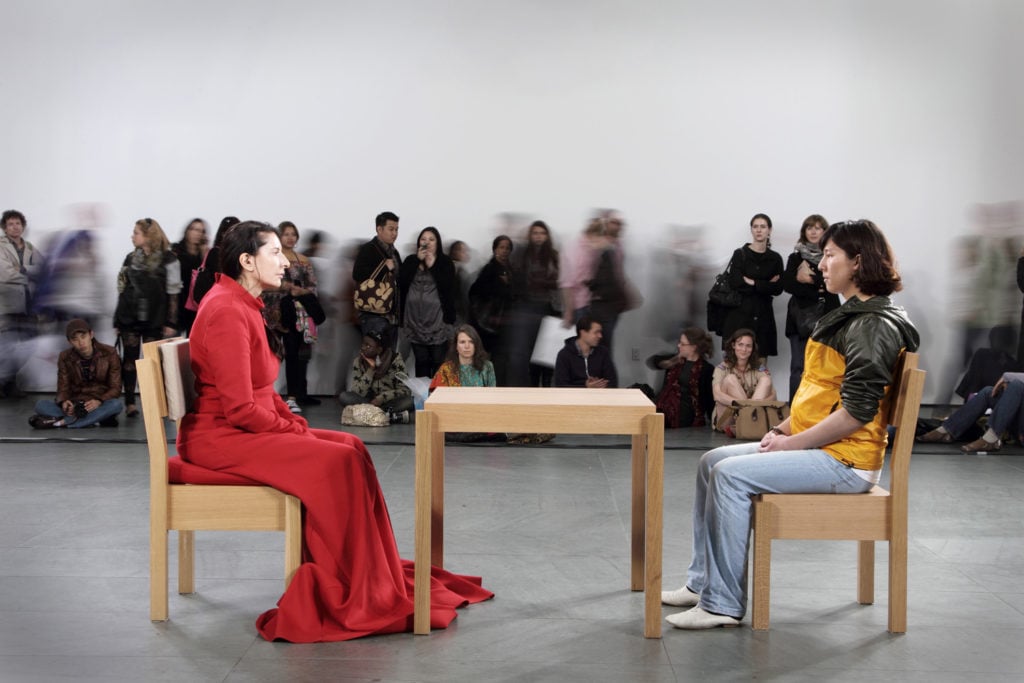
Marina Abramović‘s “The Artist Is Present” at the Museum of Modern Art. Photo by Marco Anelli. © 2010 Marco Anelli. Courtesy Sean Kelly Gallery.
We’re coming up on the 10-year anniversary of Marina Abramovic’s blockbuster MoMA survey, which at the time was a revelation in terms of showing both how performance art can be displayed in a museum, and how incredibly popular experiential, be-here-now shows can be. What did you learn from that show’s success, and how did you incorporate those lessons into the new MoMA?
For sure, that was a watershed moment, on many different levels. I remember at one point talking to one of our trustees about the exhibition and they they said, “Performance art. So… what’s that going to be?” And I said, “Well, she’s going to sit in a chair, there’s going to be another chair next to her, with a table in between her in that chair, and people will be invited to come and sit for as long or as little as they want.” And they said, “Are you out of your mind? Nobody’s going to come!”
They thought we were going to end up with a financial crisis. I said, “Eh, I don’t think that’s the case. I think there’s something extraordinarily compelling about the gesture that she is offering the public.” And, of course, as you know, the exhibition was an extraordinary success, and literally some 700,000 people came. But what it marked was the importance of performance as an art form that we needed to embrace.
It isn’t that performance had been absent before; there were many instances of performance at the museum dating back to the 1960s, and perhaps even earlier. But what that show marked decisively is the degree to which performance had become an art form that was going to be central to museums in the future. And if you think of that as the seed, what grew out of it was this fantastic studio that now is embedded in the heart of our collection galleries, designed precisely for artists to use for performance.
So the newly expanded MoMA has been upgraded to encompass performance in a central way, and to combine artworks and mediums in new configurations. How does this upgraded building anticipate where you expect art to go from here? In other words, how long of a shelf-life do you think this container will have as art and its audiences continue to evolve?
We’re going to be 90 years old in November, and we’ve actually had roughly nine different iterations of the museum over our history. We started in rented office space on Fifth Avenue, then we moved to a townhouse leased from the Rockefellers on 53rd Street—hence our address—and then to our first custom-built building in 1939.
So in a decade we had three different homes. And no sooner did we finish the 1939 expansion that we began to build the garden, which opened in 1954, and then a suite of buildings designed by Philip Johnson adjacent to the garden in the ’60s. Then [we built] two different buildings on 53rd Street on either side of our 1939 building, and on and on and on. Each of those was a response to some programmatic need of a generation of curators.
So here we are. There’s not a whole lot of room to expand, so we’ll end up reconfiguring galleries and we’ll end up finding new spaces when we need them. And at some point in the future, and I don’t know when that will be, we may run out of the energy or commitment or desire to change as much as we have changed, and that will be the point when we transition from being a work in progress—which is what I think of us as—to a different kind of institution. And I have no way of knowing whether that’s in a decade, or in 10 decades.
It may never happen. Maybe there will be sufficient energy and commitment and desire to continuously reinvent ourselves that we will be able to continue to do that.
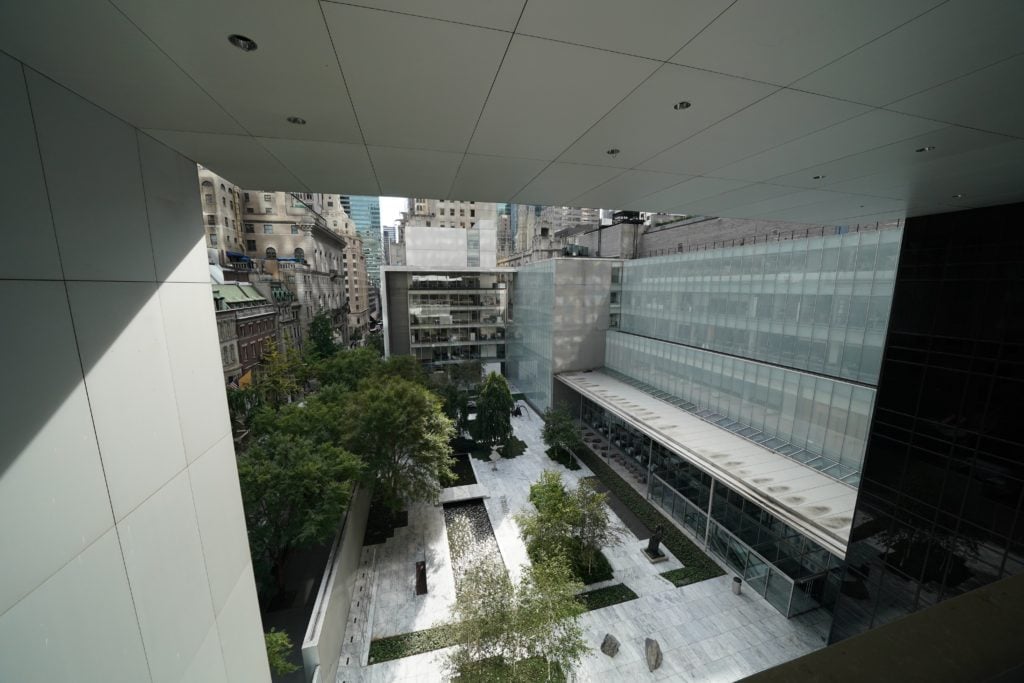
New views inside MoMA designed by architects Diller Scofidio + Renfro in collaboration with Gensler. Photo by Timothy A. Clary/AFP via Getty Images.
Or you can just put it all in the cloud.
Who knows? I mean, if you’d asked me when I joined the museum in 1995 if we would have an expansion, I would have said, “Oh, that’s possible.” Two? In 25 years? I would’ve said, “That’s mad. There’s no way we would be able to do that.” But in actual fact, the first expansion grew out of responding to a whole set of needs from the late 1980s and early 1990s that the curators felt, and in that expansion we learned that we could expand to the west.
So, [architect Yoshio] Taniguchi designed the 2004 building knowing that if we ever built again we would build to the west, so all of the infrastructure that was required for the second expansion—art corridors, elevators, all the stuff that’s behind the scenes but that eats up space—was built into the 2004 project, which meant that when we had the opportunity to expand in 2014–15, it was all there already. We could focus on just adding gallery space.
And in the intervening decade, after 2004, an entirely new generation of chief curators arrived, and they came with a different set of ambitions, a different set of ideas, and a different way of working together. So, now, this new architecture simply becomes a platform for that to be realized.
I guess it’s like the Yankees—every generation gets their own team. Often when I interview a museum director, I talk about financial challenges, but that doesn’t seem to be operative here. MoMA brought in $300 million in just two gifts alone in the past few years. How did you manage to raise money so successfully at a time when every other major New York museum was expanding, and bigger capital campaigns, like LACMA’s, were stalling? What was your pitch?
We’ve been very lucky that our trustees believe deeply and passionately in the mission of the museum. The vast majority are collectors of modern and contemporary art, so they they live and breathe what we do. They’re incredibly generous. They believe in the staff. The Rockefeller family set an admirable example of philanthropy, of giving and giving generously. So there’s a culture among our trustees of generosity—generosity of ideas, generosity of time, generosity of knowledge, and generosity of capital. They all go together—you can’t pull one of those apart. These are people who really believe in the mission of the institution.
So how could someone who believed in the museum of 2004 be comfortable with this version of the museum? Because this is quite different. And the answer is: they want the museum to be a work in progress. They want to feel that they are contributing to that idea of Alfred Barr’s that the museum is a laboratory in which the public is invited to participate in the experiments. What they bought into was this sense that they could add a new chapter to that, and that they could enable a new set of conversations to take place. So we were very lucky.
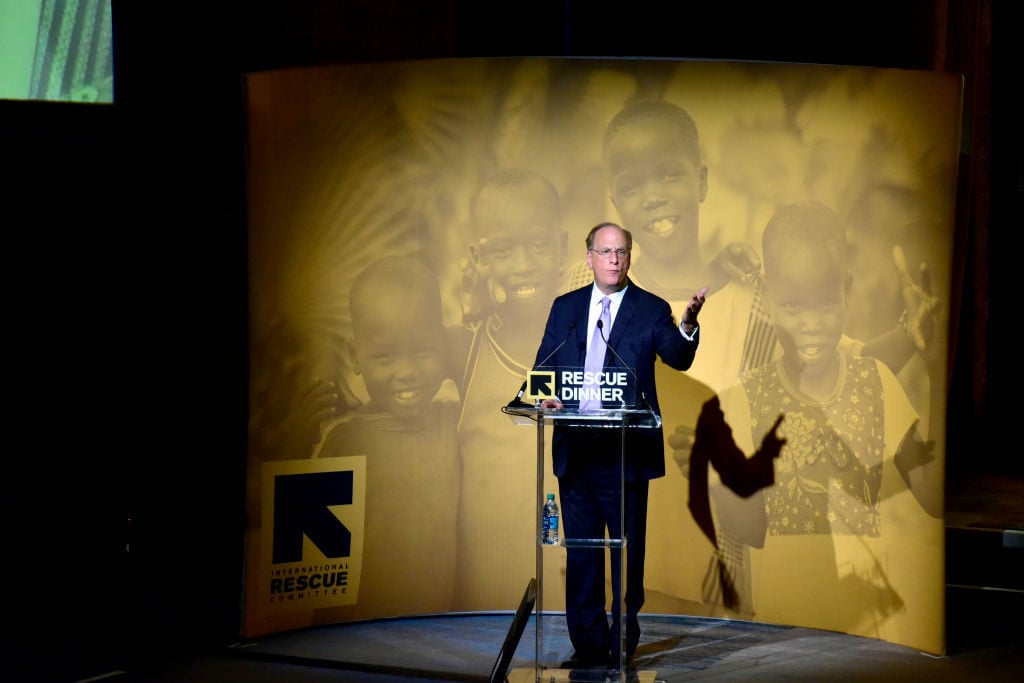
BlackRock CEO Larry Fink speaks onstage during the 2018 Rescue Dinner in New York City. Photo by Eugene Gologursky/Getty Images for IRC.
There’s no question that MoMA’s patrons are extraordinarily generous. At the same time, a protest movement that challenges patrons with ties to less-than-savory businesses continues to grow. Right now there is a renewed call for MoMA board member Larry Fink, the CEO of BlackRock, to divest from being the second-largest shareholder in two prison companies that are said to run 70 percent of the country’s immigrant-detainment activities. What is your perspective on shielding board members, who have given so generously to your museum, from such protests? How does one deal with these situations when they crop up?
I think for every cultural institution, and probably every educational institution and hospital, we’re all living in the real world, and we’re all acutely aware of the issues that are being brought to the surface and that have to be contended with. There’s no formula for that, and our trustees are aware of that.
At the same time, the vast majority of American institutions like ours are privately funded. We don’t get federal funding. We don’t get state funding in our case—we got a very modest amount of city funding for our capital project, and we get a little bit on occasion beyond that. But we’re not a CIG—a member of the cultural industries group—so there’s no line-item funding.
We live and die by the amounts of money we can raise privately. Some of that is self-earned through admissions, membership, retail, general fundraising. A very considerable amount of that is through the generosity of our trustees. So there is a balance that we tried to strike, but we are acutely aware that this is a different climate than it was a decade ago.
To pivot to another financial issue, most curators try to remain antiseptically separate from the art market, but the market nonetheless impacts what is shown in museums, just as what is shown in museums impacts the market. The tastes of art-collecting patrons, for instance, are often seen as a pressure on acquisitions. How does a museum like MoMA keep itself pure? Is there such a thing?
Of course it is possible. Again, we who are involved in the building of a collection live in the world of artists, dealers, collectors, other academics, scholars, curators—we’re all part of a ecosystem. We talk to each other, we see each other, we think about these issues collectively, and I think the answer to that is that you have to really believe in the integrity of your curatorial staff. And I believe fundamentally in the integrity of our curatorial staff. So, yes, there are artists who emerge and become darlings of the art world, and some of those are artists we’re interested in. There are other artists who emerged who are not that interesting to us. It isn’t that they aren’t good artists or market darlings, it’s just that our focus is somewhere else.
The way our process works is that the only works of art that can be acquired at this museum are works of art that have been proposed for acquisition by our curators. So, if they’re not interested in acquiring something, it’s not going to show up. Now those acquisitions have to be approved by our various collecting committees, but it isn’t like a committee member can bring a work of art to the committee and say, “I want you guys to buy that.” The only way a work of art gets in front of the committee is with the approval of the chief curator of that committee.
That’s why you have to believe in the integrity of those curators, which I do, and over time I’ve seen really heated debates: “Why aren’t we interested in that artist?” We aren’t because we’re interested in other artists more. We can’t have everything. That doesn’t mean it’s perfect. It’s not perfect. The record of acquisitions will always be a record of successes and misses until the next director comes along and recalibrates.
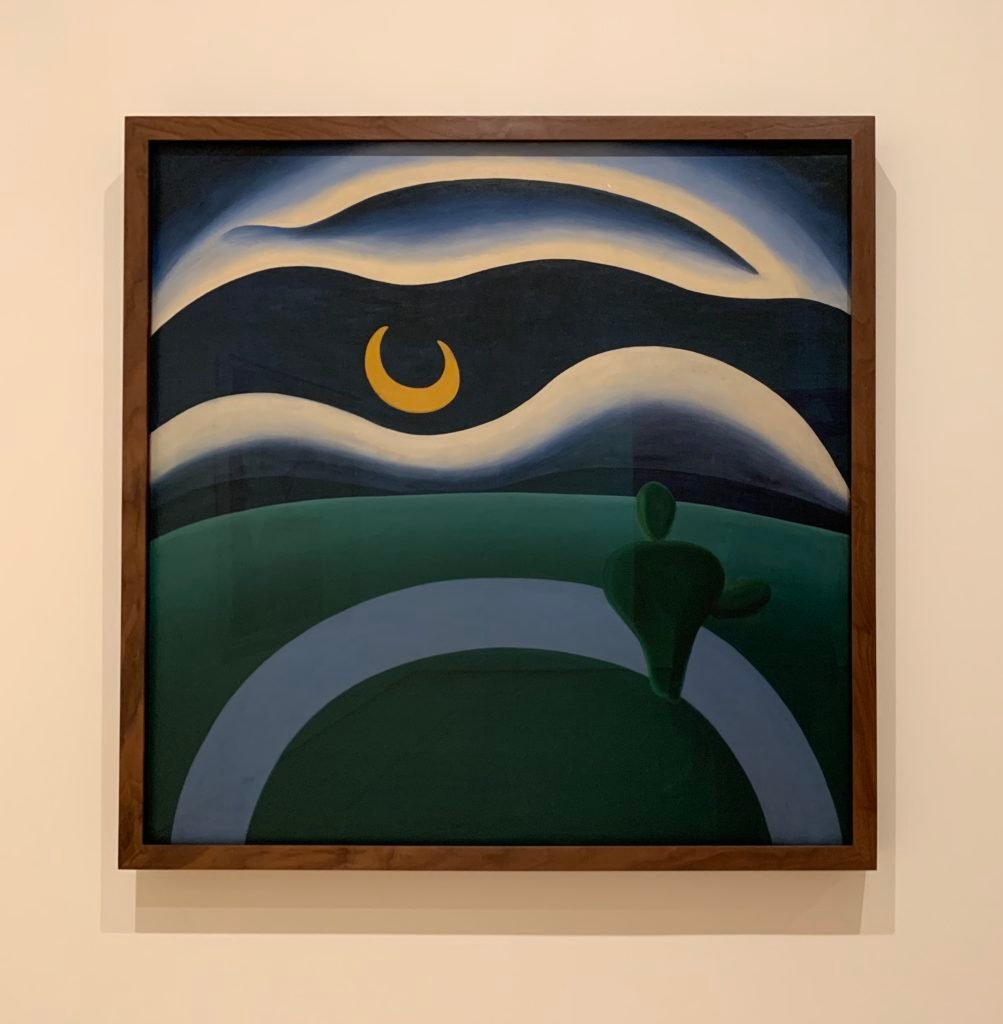
Tarsila do Amaral’s The Moon (1928) is one recent acquisition at the museum.
On that note, you have been the director of this museum since 1995, and the board of trustees has deemed fit to overlook the retirement age of 65 to extend your extraordinary run to 2025, when you will turn 71. What are you thinking about for your succession plan? Is that something that is being looked at with the same 10-year-out planning as an architectural project?
It’s really an issue for our trustees to think about. Me, I’m focused on doing the best I possibly can every day—I don’t really think about the future. Of course, I try and anticipate what questions might arise in the future, but I live in the moment. The question of long-term succession at the museum is really a question for our trustees, because it’s their responsibility.
I was surprised, and actually humbled, that I was asked to continue. It was not part of what I was thinking, but I was delighted that our trustees understood that the completion of the architecture wasn’t the end of the project, it was actually the beginning of the project—that the architecture enables a new way of engaging the collection and engaging our public and thinking about the way the museum can be.
I also think they wanted some stability, and I was thrilled to have the opportunity to play it out a little bit, because obviously I’m deeply invested along with all of our curators and scholars and educators in what we’ve created. Day one is just the beginning of how this actually works.
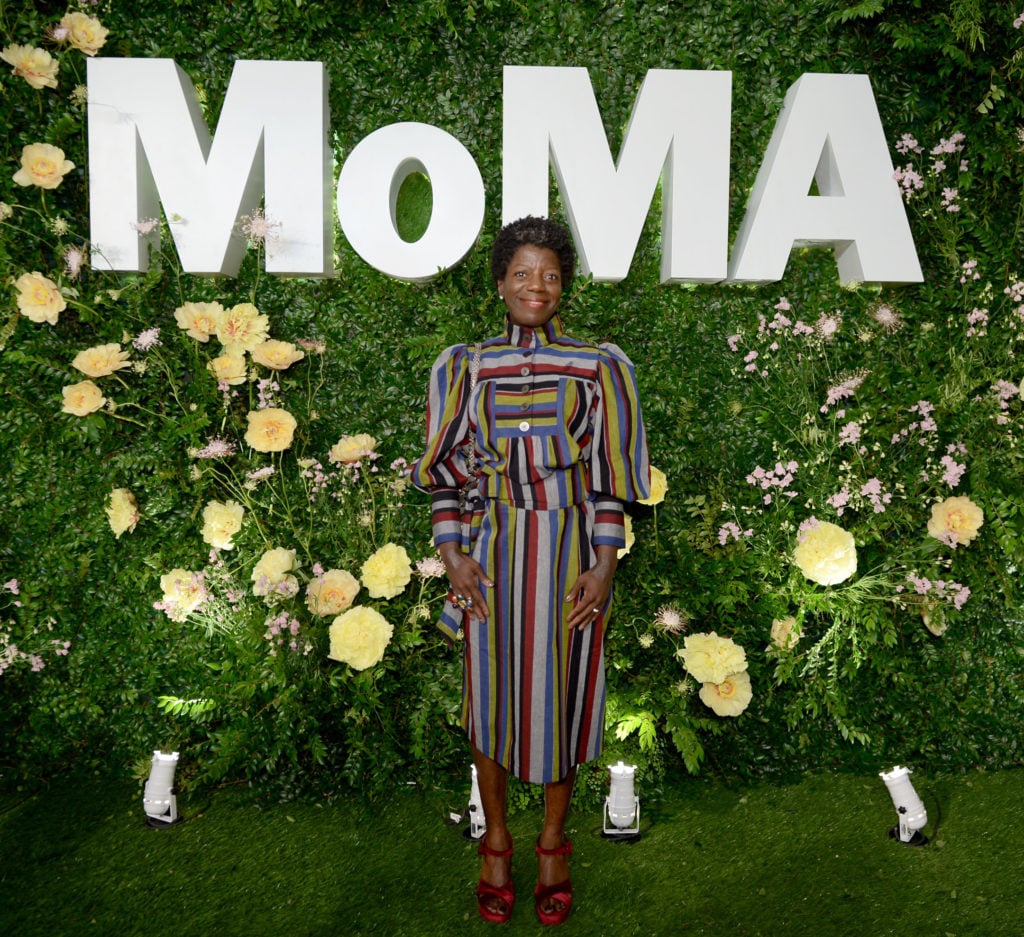
Thelma Golden at MoMA’s Party In the Garden in 2018. Photo by Andrew Toth/Getty Images for The Museum of Modern Art.
Day one also sees the inauguration of a new partnership with the Studio Museum in Harlem, with that museum’s director, Thelma Golden, inaugurating a new Studio Museum at MoMA project series with a show of paintings by Michael Armitage. Why did that seem like a necessary partnership at this time? It seems especially notable given that Golden would make an excellent candidate to be your successor.
First of all, it’s not an entirely new partnership. Thelma and I started a project about four years ago, the Studio Museum in Harlem MoMA fellowship program, where African American men and women spend a year at the Studio Museum and they spend a year at MoMA. Each fellowship is two years, so they get the experience of working in a large, complex museum and in a small, very focused museum. It’s part of our commitment together to build the next generation of great curators and museum professionals.
So the partnership started there, and actually you can go back even further because many people at the Museum of Modern Art were instrumental to the founding of the Studio Museum. In any event, Thelma and I enjoy working together, and when it became clear that the Studio Museum was going to have to close for four or five years because of their construction project, I simply said, “Thelma, if you ever need a space to do a project, we’d love to be part of an equation.”
Over time the Studio Museum decided that, since they couldn’t replicate what they do while they were under construction, they would disperse across the city. We decided that there would be one exhibition a year at MoMA, the Studio Museum at MoMA series, and there would be one exhibition a year at MoMA PS1 of their artist-in-residence program.
So, it’s just a way of being a good citizen, helping another institution that we admire greatly. I also think it’s good for everybody. It perhaps introduces some artists into our program that we might not have focused on, or focused on as early as the Studio Museum. It shows that museums don’t have to compete with each other. You can be partners to get things done.
It also introduces Thelma Golden to MoMA’s staff and trustees in a very concrete way.
Although Thelma hardly requires an introduction—she’s a fantastic, brilliant curator and director, and I think this works in part because she is admired greatly by her colleagues and our trustees.
This has clearly been an extraordinarily busy time for you. I’ve heard that, remarkably, with all of this herculean activity taking place, you have somehow managed to find the time to write a book about contemporary art in the Middle East. Is that true?
Well, I’ve been working on it for a while. It’s a book that I’ve wanted to write, and it’s called In-Between Places: Contemporary Art in the Middle East. It goes back to my own interests, because I began as a scholar of Islamic art, and so it’s a way of trying to marry that interest in the region with what I do today, which is work on modern and contemporary art. I hope it will be published within a year. The editor had the end of September as my deadline, and I only just made it. Just.